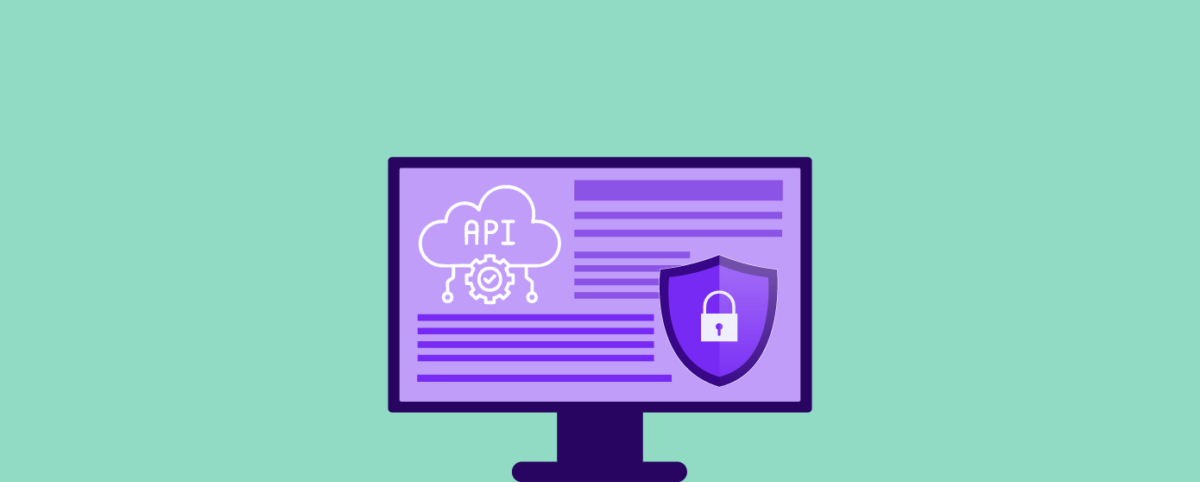DPDP Rules 2025: The New Compliance Era and How AppTrana Helps You Get There
On 14 November 2025, the Government of India notified the Digital Personal Data Protection (DPDP) Rules, 2025, officially activating the DPDP Act, 2023.
The Rules transform the law from a policy framework into a fully enforceable compliance regime, starting an 18-month implementation countdown for every business in India.
The Rules convert previously high-level sections such as Section 8 (Duties of Data Fiduciaries), Section 9 (Children’s Data), and Section 11 (Rights of Data Principals) into detailed, measurable, auditable obligations.
Together, the Act and the Rules create a citizen-centric, privacy-first, transparent and accountable data governance system, redefining how organisations collect, use, store, and secure personal data.
Why DPDP Matters Today: The 2025 Turning Point
When the DPDP Act passed in 2023, organisations mostly treated it as a policy-level obligation. It defined rights, duties, and penalties, but did not prescribe the formats, processes, or timelines needed to actually comply.
This gap created uncertainty around, breach notification processes, consent structure and design, accuracy verification, deletion workflows, SDF obligations, Board functioning and audit expectations.
The DPDP Rules, 2025 resolve this ambiguity.
For the first time, organisations have:
- an 18-month compliance timeline
- a digital Board and complaint portal
- written formats and timelines for breach notifications
- clear consent and notice design standards
- data request turnaround requirements
- audit-ready obligations for Significant Data Fiduciaries
This elevates DPDP from “policy compliance” to a full operational transformation of digital systems.
DPDP Act vs. DPDP Rules — Detailed Comparison
| Area | DPDP Act, 2023 (Framework) | DPDP Rules, 2025 (Operationalization) |
|---|---|---|
| Nature | High-level statute | Detailed compliance instructions |
| Consent | Concept explained | Format, language, purpose-bound, delivery rules |
| Rights | Defined | Implementation timelines (90 days), formats |
| Data Breaches | Reporting required | Detailed notification template, channels, timelines |
| SDF | Category introduced | Audit, DPIA, risk assessments, localisation rules |
| Data Protection Board | Defined | Fully digital board, 4 members, complaint portal |
| Timelines | Not specified | 18-month phased compliance |
| Penalties | Amounts defined | Enforcement becomes active & auditable |
| Notices | General guidelines | Mandatory plain-language notices |
| Children’s Data | Parental consent required | Verification standards, exceptions for essential services |
DPDP Act 2023 -> DPDP Rules 2025 — The Operational Blueprint
The Rules translate the Act into actual implementation requirements.
Section 8: Duties of Data Fiduciaries
(a) Purpose Limitation (Sec 8(1)) → Consent Notices
Under the Act, consent was a principle. Under the Rules, it becomes a process.
Organisations must now issue separate notices for every purpose, written in simple, accessible language that users can understand without legal guidance. Consent notices must clearly explain what data is collected, why it is collected, how users can withdraw consent, and what happens when they do.
This requires most organisations to redesign onboarding flows, sign-up journeys, mobile UI messages, and even API-level consent prompts.
(b) Data Accuracy (Sec 8(3)) → Verification Standards
The Rules introduce standards for ensuring that personal data used for decisions is complete and correct. Companies must create end-to-end correction workflows, dispute resolution steps, and propagation processes to ensure downstream vendors update or delete data as required.
This means organisations must build internal data accuracy pipelines, rather than relying on ad-hoc updates.
(c) Security Safeguards (Sec 8(5)) → Concrete Obligations
Earlier, organisations could decide what “reasonable safeguards” meant.
Now, they must maintain documented security policies, implement technical controls, review them periodically, and ensure processors apply equivalent protections. Proof of these safeguards is required during Board audits.
(d) Breach Notification (Sec 8(6)) → The “Prescribed Manner” Finally Defined
The Rules finally remove the ambiguity around breach reporting by prescribing what must be reported, to whom, and how quickly.
Organisations must notify both the Data Protection Board and every affected individual without undue delay. They must also maintain justification for any delay and keep evidence that notifications were actually sent.
(e) Storage Limitation and Deletion (Sec 8(7))
Companies must regularly evaluate whether they still need the data they hold. If not, it must be deleted, logged, and deleted across all processors as well. Retention schedules must be documented and followed, not just declared.
Section 9: Children’s Data – Rules Expand Operational Safeguards
The Rules impose stricter operational safeguards for children’s data, including risk-based age verification and verifiable parental consent. Only essential services receive limited exceptions. Every verification method used must be documented and justifiable, reinforcing accountability.
Section 10: Significant Data Fiduciaries
For SDFs, compliance becomes far more rigorous. Annual independent audits, DPIAs, risk registers, and ongoing monitoring are mandatory. SDFs may also be subject to government directions on data localisation, restricted data categories, and cross-border transfers. This establishes a higher and more transparent bar for organisations processing sensitive or high-volume data.
Section 11: Rights of Data Principals
Data Principal requests whether access, correction, update, or deletion, now come with within the prescribed timeline (usually 30–60 days). Organisations must verify identities before fulfilling requests, propagate changes to vendors, and explain if an erasure request cannot be fully honoured. These rights introduce a new category of operational workflows that businesses must build and secure.
Penalties for Non-Compliance
The Act imposes heavy monetary penalties for violations:
| Violation | Max Penalty |
|---|---|
| No security safeguards (Sec 8(5)) | ₹250 crore |
| Failure to notify breach (Sec 8(6)) | ₹200 crore |
| Violation in handling children’s data (Sec 9) | ₹200 crore |
| Breach by Significant Data Fiduciary (Sec 10) | ₹150 crore |
| Violation of Data Principal duties (Sec 15) | ₹10,000 |
| Other violations | ₹50 crore |
With the notification of the DPDP Rules, 2025, these penalties are now fully enforceable. The 18-month implementation window marks the beginning of active monitoring, audits, breach investigations, and complaint redressal by the Data Protection Board.
How AppTrana Helps You Meet DPDP Security Requirements
While the DPDP framework introduces organisational, governance, and documentation requirements that businesses must build internally, it also imposes a series of technical, security, and operational obligations, particularly under Section 8, Section 9, Section 10, and Section 11.
These obligations demand a level of continuous protection, monitoring, risk mitigation, and breach readiness that cannot be achieved through manual workflows alone.
This is where AppTrana WAAP plays a critical role.
AppTrana acts as a real-time enforcement and protection layer that helps organisations meet the Act’s most demanding requirements, especially those that directly relate to the integrity, confidentiality, availability, and safe processing of personal data.
1. Supporting Section 8(3): Data Accuracy and Integrity
DPDP mandates that any personal data used for decision-making must be complete, accurate, and not tampered with.
AppTrana enforces strict input sanitisation and validation policies that filter and inspect every incoming request:
- If a malicious payload attempts to modify personal data through SQL, XML, JSON, or file injection attacks, AppTrana blocks it before it even reaches the application.
- By preventing polluted payloads and malformed data requests, AppTrana helps organisations ensure that personal data remains accurate, complete, and trustworthy, as required under Section 8(3).
This protects not only the data stored in your systems, but also the quality and reliability of decisions made using that data.
2. Supporting Section 8(5): Reasonable Security Safeguards (Made Measurable by Rules 2025)
One of the most critical sections of the Act requires Data Fiduciaries to implement “reasonable security safeguards” to prevent breaches.
AppTrana’s WAAP acts as a 24/7 adaptive shield, blocking attacks before they reach your applications and helping you meet DPDP’s requirements.
- Real-Time WAF: Stops OWASP Top 10 threats like SQL injection, auth bypass, API abuse, and logic attacks.
- Virtual Patching: Instantly protects against zero-day and unpatched vulnerabilities, reducing breach risk even before code fixes are deployed.
- Bot Mitigation: Uses behavioural ML and fingerprinting to block credential stuffing, scraping, and account takeover bots.
- Continuous Scanning: Integrated DAST finds vulnerabilities, applies automated mitigation rules, and provides audit-ready evidence for DPDP compliance.
3. Supporting Section 8(6): Breach Detection, Reporting, and Evidence
DPDP makes breach reporting mandatory to the Data Protection Board and affected individuals.
AppTrana strengthens DPDP breach-readiness by giving organisations early detection, fast alerts, and forensic clarity, all essential for meeting the Rule 2025 requirement to notify users “without undue delay.”
- Real-Time Threat Detection: AppTrana monitors live traffic for abnormal patterns, data-access spikes, scraping, exfiltration attempts, session anomalies, and account takeover signals, alerting you the moment suspicious behaviour appears.
- Instant Alerts & SOC Integration:Security teams receive immediate notifications, enabling rapid containment and investigation so breach reporting can begin quickly and accurately.
- Forensic Logging: AppTrana captures attacker IPs, payloads, timestamps, access paths, and full request flows. These logs provide the detailed evidence required for DPDP breach notifications and any follow-up inquiries from the Data Protection Board. AppTrana’s one-year log retention ensures organisations always have long-term, audit-ready evidence when incidents require deeper investigation.
4. Supporting Section 10: Significant Data Fiduciaries (SDFs)
If your organisation becomes an SDF, compliance requirements become significantly stricter.
SDFs must demonstrate ongoing oversight, audit readiness, and risk monitoring.
For SDFs, AppTrana plays a key role in meeting DPDP requirements by offering:
- Zero Vulnerability Reports: With SwyftComply AppTrana facilitates attaining audit-ready Zero Vulnerability Reports that help Significant Data Fiduciaries prove that vulnerabilities are continuously identified, monitored, and mitigated.
- Continuous Attack Analytics: To meet DPDP’s risk-awareness expectations, AppTrana offers insights into attack trends, traffic sources, mitigation events, and overall threat patterns, giving SDFs a clear view of evolving risks.
- Proof of Continuous Monitoring: During audits or Board inquiries, organisations must demonstrate ongoing oversight. AppTrana automatically records block events, mitigation actions, DAST findings, patch timelines, and suspicious behaviours, creating a defensible evidence trail for DPDP compliance.
Stay tuned for more relevant and interesting security articles. Follow Indusface on Facebook, Twitter, and LinkedIn.
Frequently Asked Questions (FAQs)
The DPDP Rules turn the 2023 Act into an enforceable compliance regime by defining formats, timelines, and operational processes for consent, breach notification, accuracy verification, children’s data protection, and SDF audits. Organisations now have clear, measurable obligations with an 18-month implementation timeline.
Key operational requirements include:
• separate, purpose-specific consent notices
• accuracy checks and correction workflows
• documented security safeguards
• breach reporting “without undue delay”
• deletion & retention schedules
• 90-day turnaround for data principal rights
• annual audits for SDFs
For the first time, organisations must notify both the Data Protection Board and affected individuals, provide detailed incident information, maintain proof of notification, and justify any delay. This makes breach readiness a continuous obligation, not an event-driven one.
AppTrana provides real-time WAF protection, bot mitigation, virtual patching, continuous DAST scanning, forensic logging and attack analytics. These capabilities help organisations meet Section 8’s “reasonable security safeguards” with demonstrable evidence.
Every organisation including startup, enterprise, public body, or global company, processing the personal data of individuals in India must comply. The Rules apply regardless of business size, industry, or location, as long as Indian personal data is being processed.
The Government notified the DPDP Rules on 14 November 2025, triggering an 18-month countdown. Every organisation must complete all compliance activities such as governance, technical safeguards, documentation, rights workflows, vendor alignment within this period.
The DPDP introduces steep financial penalties for violations such as delays in breach reporting, weak safeguards, improper consent, or failure to honour data principal rights. The Data Protection Board can also conduct inquiries, demand audits, and issue directives.

 November 24, 2025
November 24, 2025






